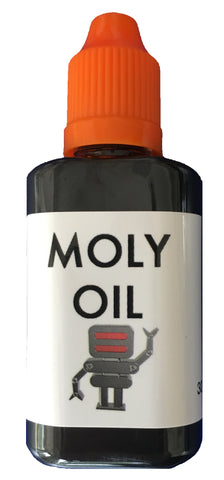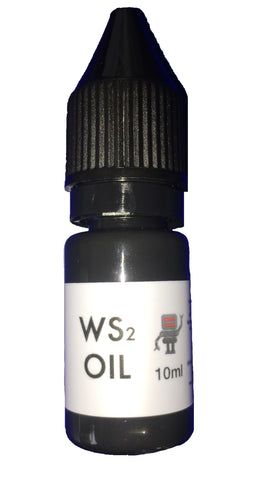How we got into 3D printer lubrication
Share
In the past few weeks we have launched our range of lubricants developed specifically for 3D printers on, but we are a robot company so what happened?!
Like many companies we run a few 3D printers to make parts, especially for prototyping. When it came to keeping them in good condition we found that the manufacturers didn't mention very much about maintenance, in fact one or two were pretty vague about assembly and operation!
Knowing a bit about servicing industrial and desktop robots we realised that our 3d printers needed oil and grease to keep them running smoothly but a quick hunt around the web showed that not only was there scant information but some of it was not good.
One major issue is that 3D printers typically employ a lot of plastics that can be damaged using hydrocarbon based oils and greases, especially those containing a lot of solvents and propellants. The rubberised guide wheels are especially susceptible to solvents that can turn them into a sticky mess. (WD40 we are looking at you.)
We are also conscious of the fact that 3d printers running open loop steppers are very prone to missing steps if the loading gets too high. Any increase in friction or indeed stiction will cause issues with print speeds and quality.
So we identified that we needed a light, low viscosity, inert oil, and we knew what was needed - Silicone oil. Silicone based lubricants work well with plastics and rubbers as they have dissimilar chemistry. Silicone oil is quite expensive compared to hydrocarbon based oils but you don't need much on a printer. Also on 3D printers the last thing you want is grease everywhere preventing prints sticking so we decided we needed a neat little bottle with a thin nozzle so we could apply it accurately. So we specified this:
![]()
and you can now get our silicone oil from Amazon with Prime delivery in the UK
For the simpler application of the z axis lead screws, which are metal on metal (bronze and steel) we wanted some very high quality grease that would stay put and last. We already used similar stuff on our SCARA robots and so we specified this:

Again, we have put it on Amazon with Prime delivery in the UK here
Silicone oil and Lithium PTFE are pretty good stuff but, being us our research had led us to the cutting edge of lubrication technology and we found two compounds that looked really good: Molybdenum disulphide and Tungsten disulphide.
Molybdenum disulphide we knew about as a lot of industrial robot use "moly" grease, especially in high precision cycloidal gearboxes. Highly wear resistant and suitable for very demanding applications moly is great stuff but usually only supplied in hydrocarbon greases. The other option for moly is a very messy dry powder that goes everywhere.
So we hit on an idea, and put a bit of moly powder in silicone oil. Being very dense the moly drops out of suspension but a quick shake gives a nice fluid, plastic safe, lubricant that is easy to apply and is loaded with moly to increase durability. It should be noted that molybdenum disulphide actually absorbs into the matrix of plastics and is used in this way in self lubricating plastics. Our MOLY OIL was created!

You can buy MOLY oil on Amazon UK here - again with next day Prime delivery
Finally our molybdenum disulphide supplier mentioned WS2 or Tungsten Disulphide. Tungsten, like Molybdenum is a dense metal renowned for its strength and durability. In parts like jet engine nozzles and light bulb filaments it can withstand extreme conditions. As a disulphide it imparts not only strength and durability but also, it turns out, incredible lubricity or "slipperyness".
With a co-efficient of friction of just 0.03, which is very low - which is very good, Tungsten Disulphide (chemically WS2 -W is the symbol for tungsten from its German name Wolfram S2 for two sulphur atoms) is more slippery than PTFE - it has about the same friction as ice sliding on ice!
WS2 lubricants were developed by Nasa for space probes that would have to contend with the most extreme conditions imaginable. WS2 has not really been commercially used much as although it is slipperier and more durable it is several times the cost of alternatives like Moly. So with the exception of a few formula one parts and things going into deep space it is not cost effective. But given that on our 3D printers we are only using a little... we thought why not...

WS2 oil might not have been widely available before, but is is now! Again we've put it on Amazon with next day Prime delivery here.
If you are interested in making a bulk or large trade purchase please get in touch.
